Most plants may grow in typical soil, but choosing the right soil for your plants is vital to their growth. Providing quality growth substrate and developing under perfect development conditions can reveal the best growth of your plants. Keep reading for my tips for the best soils and planters for peace lily houseplants.
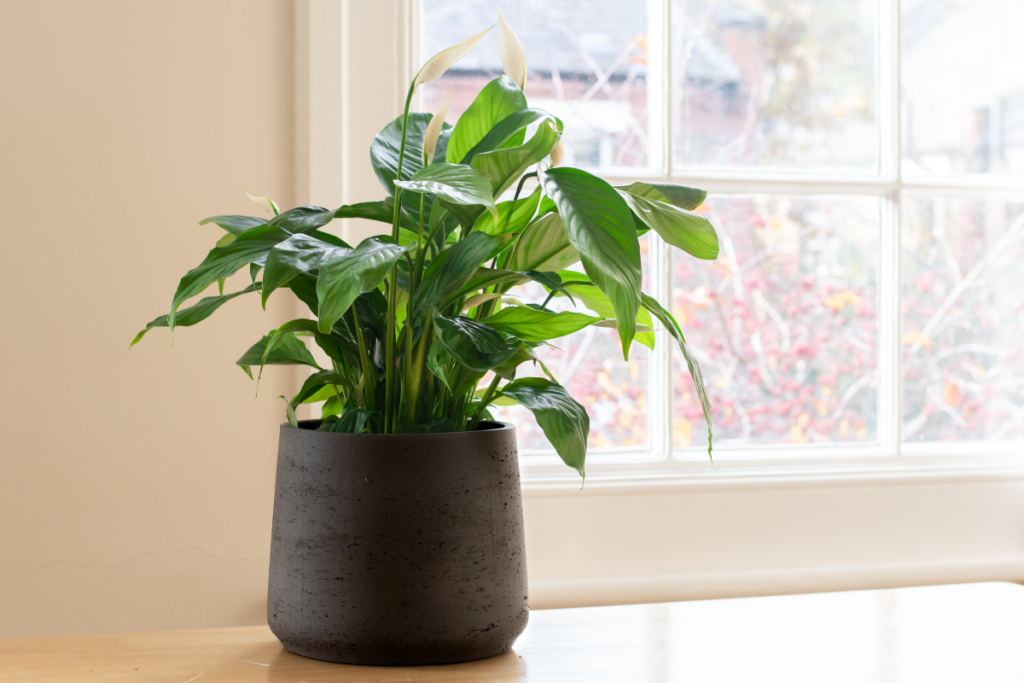
With the proper soil and the right attention, your Peace Lily plant will thrive, making it easy to care for since it will become stronger and more capable of absorbing water and nutrients and becoming more tolerant and immune to disease. This wonderful Peace Lily is native to tropical regions of South America.
Read on to learn more about the finest soil and planter for your peace lily!
RELATED: How To Revive A Dying Peace Lily: Essential Tips and Tricks
Best Soil Mix for Peace Lilies
Peace lilies are a popular beginner-friendly houseplant, yet, selecting the correct soil for your plant can be difficult for a new houseplant parent. Remember that peace lilies are technically an aroid, not a lily, and belong to the family Araceae. So it has soil and potting preferences.
This family of plants typically favors a balanced soil that drains well and retains just enough moisture to keep the soil evenly humid without becoming waterlogged. As a result, a mix for peace lilies, wich is also intended for all aroids, contains a lot of chunky components like perlite, orchid bark, pine bark, and peat moss.
To retain water, the mixture should also include some organic matter. Peace lilies also require acidic soil media with a 5.8 to 6.5 range of pH. They grow in US agriculture plant hardiness zones 10 and above.
Significance of a Proper Soil Mixture
The right soil mix is of utmost importance to a house plant because the roots are only limited to the pot as a substrate in which plants grow and obtain nutrients. Here the roots collect water, oxygen, and nutrients held in the soil then go to the stem and leaves. It helps these plants grow leaves and lovely flowers.
Having the right soil mix for your plant is important, however, only some of the plants have the same soil mix, such as cactus soil and succulent soil mix. Using an improper soil mix for your plant could stunt its growth and cause it to have a hard time flowering. So make sure the soil mix for your peace lily is appropriate so that the roots can happily absorb the nutrients necessary for healthy and productive plants.
Aside from getting nutrients from the soil, it is also vital to manage its other needs, such as placing it in a location with bright indirect light, regularly watering its soil, and feeding it once a month to promote development. Maintaining ideal soil composition additionally aids in preventing pests from attacking plants.
Wrong Potting Soil Problems
Examining your soil before planting and making the necessary adjustments and improvements is important for healthy growth. Take note that fertilizing plants that are not growing well is not the basic solution. It always comes from its primary resources, such as its soil. These are the reasons why the plants cause problems with the soil:
Capacity for Holding Water
Potted soil in containers dries faster than direct soil or garden soil. However, too much water can be a problem, resulting in stagnant water, erosion, and nutrient loss. It’s essential to choose a mixture that can contain water that is neither too wet nor too dry. Both circumstances result in poor plant growth.
You can add organic sphagnum peat moss to your peace lily plants. It is used in many commercial potting soils because of its capacity to hold water.
Continue reading about peace lily watering.
Aeration
Aeration promotes soil oxidation, lowers compaction, and enables roots to absorb the right nutrients and expand as widely as feasible. Without sufficient aeration, plants may die from a lack of oxygen. By loosening the mixture and enhancing aeration, adding sand, perlite, or vermiculite can assist in resolving the issue of heavy potting mix.
Drainage
Another factor that affects plant health is the drainage where water flows out. Peace lilies need good drainage in their soil to filter out large amounts of water. Most plants will die if their roots become submerged in water.
Some decomposing organic potting mixes can also compact the soil and interfere with drainage. Also, to ensure that water drains properly, pots must have weep holes large enough to drain water.
Soil pH level
The soil’s pH will impact how the nutrients interact with one another, as well as how accessible they are to plants. Your plants may experience issues due to the pH of the potting soil, especially if highly acidic additives like sphagnum peat moss are used. Incorrect pH levels can stunt plant growth, burn plants, or even kill them.
RELATED: How To Get More Peace Lily Flowers: Helpful Tips and Tricks
Best Planters for Peace Lily
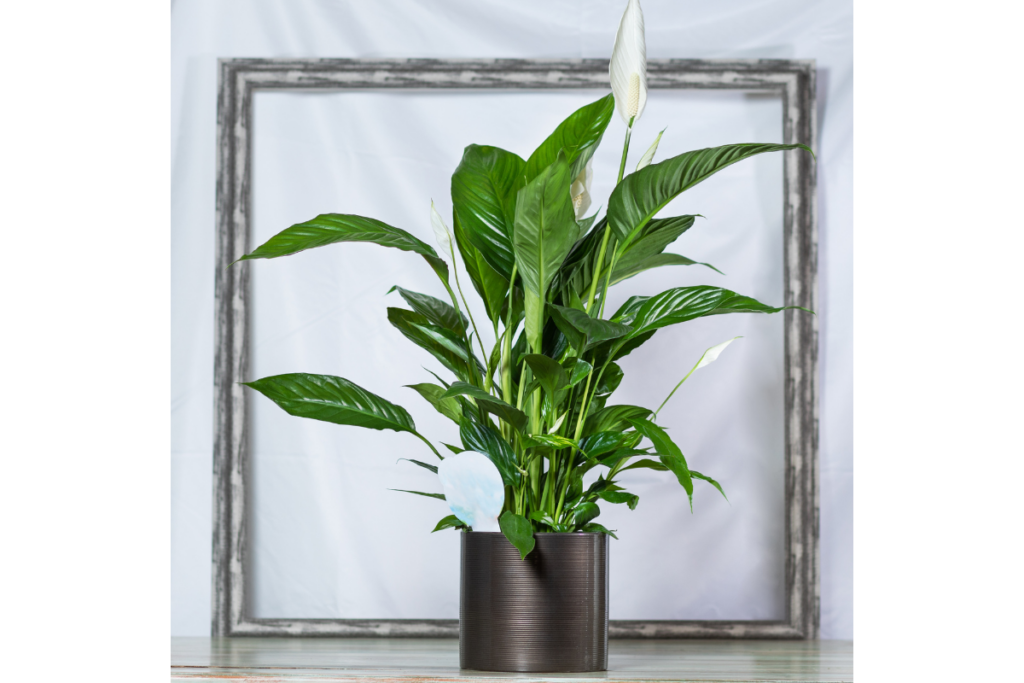
Choosing the proper type of pot is also important in providing and assisting the soil in producing a healthy, peace lily. Various pot materials possess different qualities in wet and well-draining soil.
As a result, the appropriate pot must also provide sufficient drainage while holding onto precisely the right amount of moisture. There are a few important things to consider when choosing a pot for your peace lily. These factors include how often you water your plants, the temperature in your house, and the area where you intend to keep the plant.
Plastic Pots
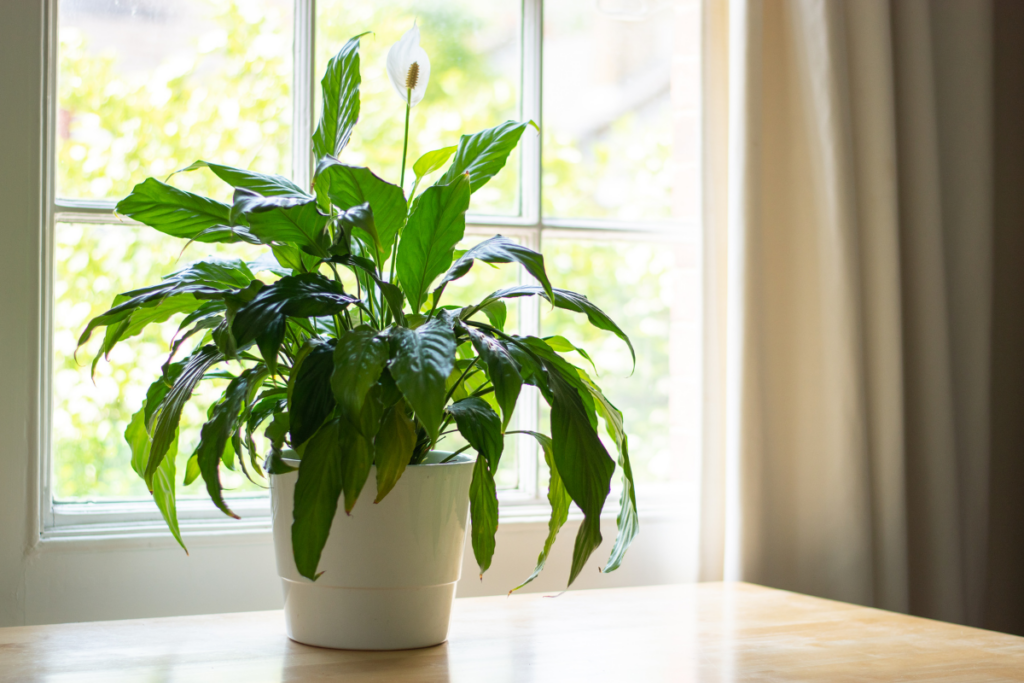
Plastic pots are lightweight, sturdy, and flexible, but they do not endure as long as resin-based planters. Plastic pots are inexpensive and widely available on the market. The benefit of this pot is that it may be used again once your peace lily outgrows it.
However, there is a drawback to these plastic pots in terms of moisture retention. It holds water for a long time, which causes rotting to peace lily’s roots.
Is using plastic pots the best option? Compared to other pots, plastic planters retain moisture longer. Therefore, plastic is definitely a safer option if you’re the type who frequently needs to remember to water your plants. Additionally, this is the lowest option if the price is a major consideration.
Terra Cotta Pots

In a terra cotta planter, the potting soil for your Peace Lily will dry up more rapidly, which is advantageous if you’re worried about overwatering. However, this plant would prefer to be underwater rather than overwatered, as this corresponds to its native habitat.
These clay pots’ porous nature allows for efficient drainage of excess rainwater from the soil. Therefore, placing them in dry and hot weather will dry out more quickly, so if the pot appears dry, your plant will need some watering.
Terra Cotta is also an excellent choice for you. It aids in measuring and maintaining your plant’s moisture levels. This is fantastic for plants requiring adequate drainage and susceptible to root rot. Terracotta can be used both in indoor plants and outside; it may be carried inside during the winter.
Ceramic pots
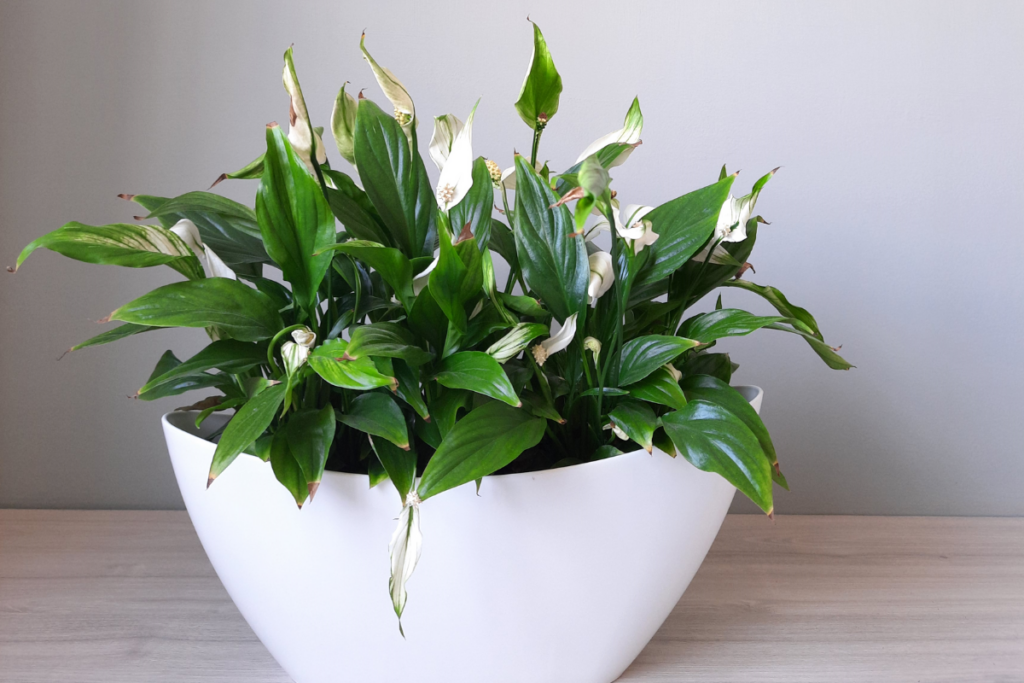
In hotter areas, ceramic pots are an excellent choice for peace lilies. They won’t absorb moisture like terracotta pots because they are non-porous. However, it is susceptible to root rot, and fungal growth would ensue. It is appropriate for someone who waters their plants infrequently.
Furthermore, ceramic pots are available in a wide range of colors and styles, which can add a decorative touch to your home. Make sure your ceramic pot has drainage holes. Be careful not to shatter the ceramic while drilling it.
Wooden pots
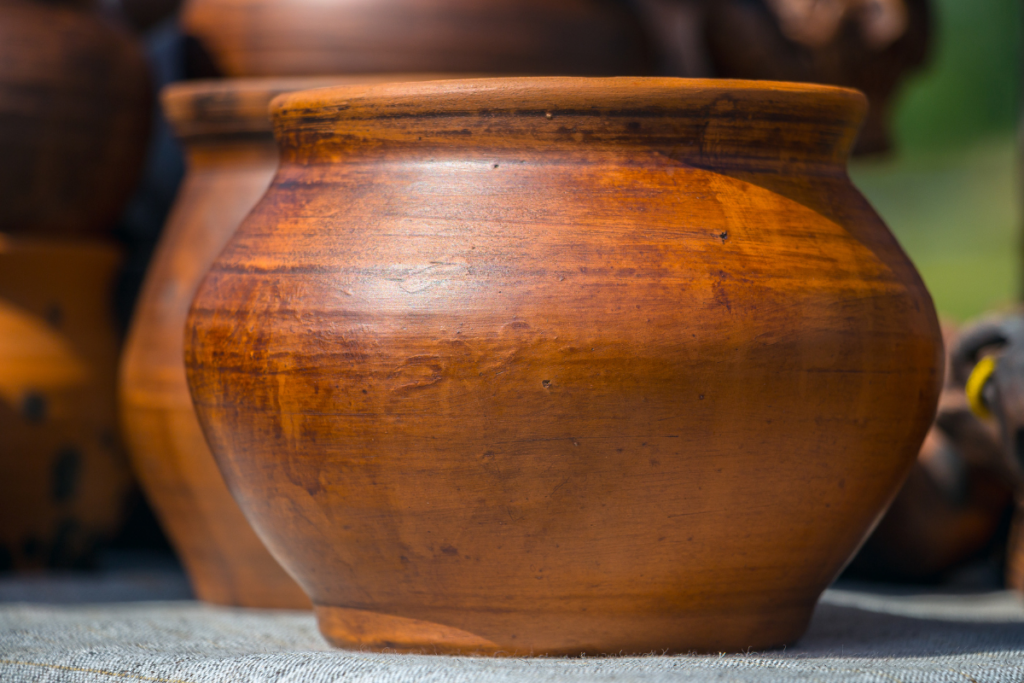
Another choice is wooden containers, which are made of natural materials which are good for plants. However, it costs a bit more than other ordinary pots. What is good about it is that wooden pots can give your home a more natural and native appearance.
To remind you, wooden pots are biodegradable, which means that if utilized improperly, they may deteriorate over time. especially if they are frequently exposed to moisture. Therefore, using a wooden pot is not the best idea. However, if it will fit in your garden, make sure it has a drainage hole.
RELATED: Peace Lily Flowers Turning Green: Tips and Tricks to Fix It
Concrete pots
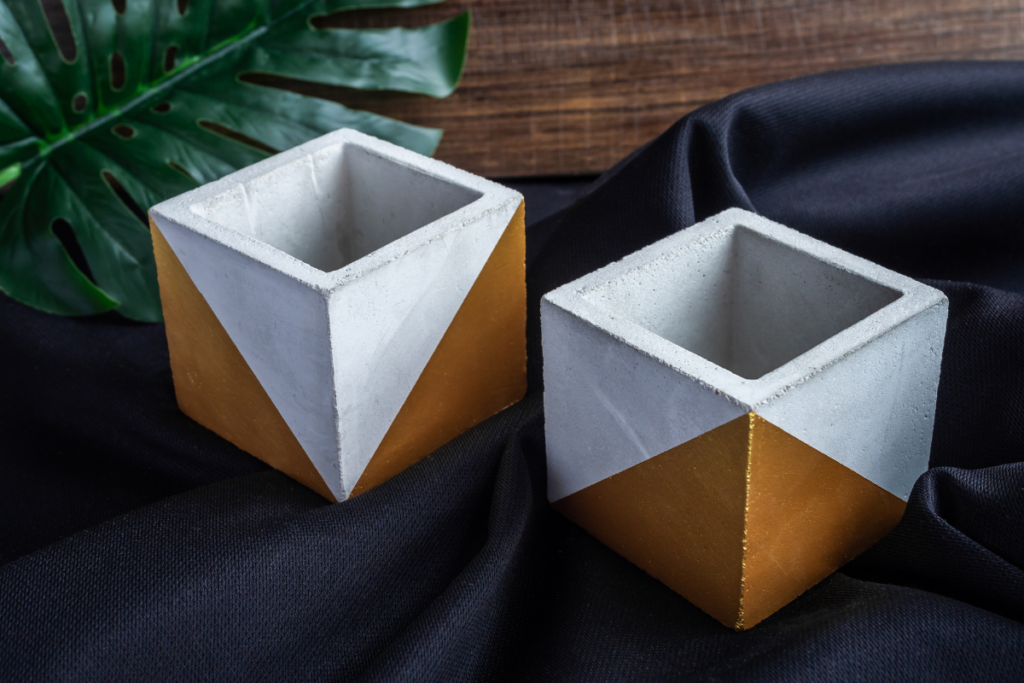
Concrete pots are great for potted plants since they are porous and allow some moisture to pass through. It is a good choice for peace lilies growing outside in colder, windier conditions, as it is hard to tip over. However, it contains lime, which, when combined with water, can raise the soil’s pH level and be hazardous to many plants that prefer acidic soils.
Metal pots
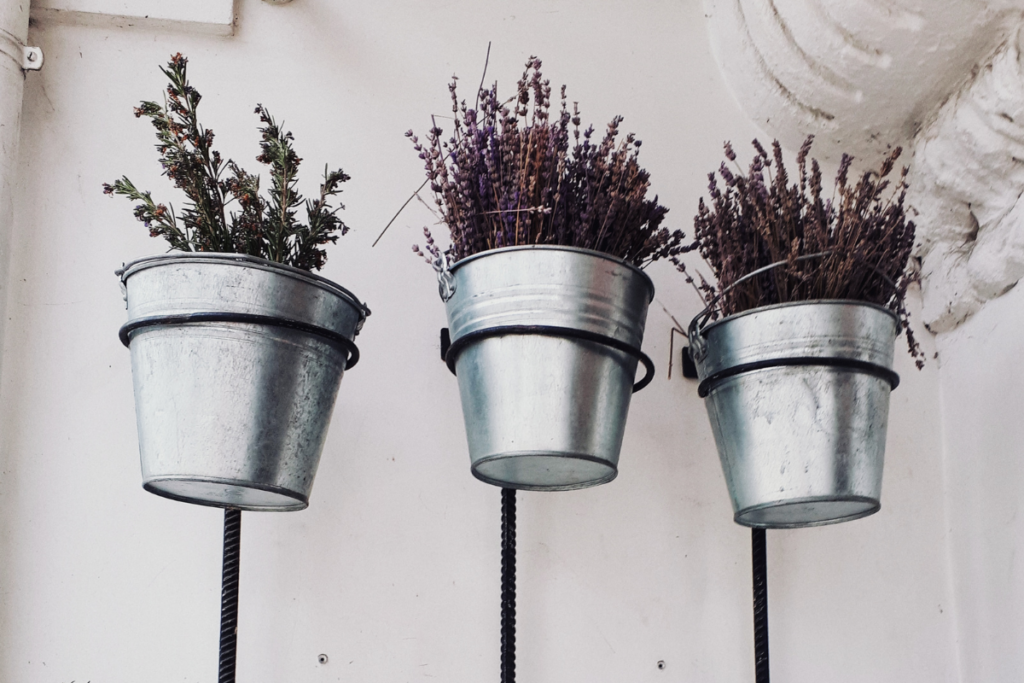
The metal pot is rarely seen and is used more than other pots. They are durable and can last longer, but they are not good for your peace lily. It is too risky for outside and inside plant health. Most likely, it will rust, especially when it gets wet all the time. The metal can rust and cause oxidation to occur at the bottom of the plant. Also, excessive heat outside can burn and harm the soil and plants.
Potting and Repotting Peace Lily
Repotting is an opportune time to replace the Peace Lily soil with a new mix. Even if you have a good potting mix and containers, you still need to change them when the time comes, but only relocate them when it starts to become too firmly rooted. Your plant will eventually fill the pot and the soil it is planted in, making it difficult for the plant to obtain nutrients and water.
To guarantee they can absorb adequate amounts of moisture and nutrients to sustain the plant. Move your peace lily into a larger pot, preferably in the early spring. Make sure to have a small size increase, perhaps 2 inches larger than your previous pot. Overwatering may occur if the container is too large. When you repot your Peace Lily, make sure to use fresh potting soil.
How to Repot Peace Lily
Peace lily can be easily repotted by moistening the soil to make it easier to take the plant outside of the pot.
- First, get some water to moisten your soil. Let the plant absorb water and the soil absorb moisture before gently removing and inspecting its roots for signs of damage.
- If the plant has any wet roots, you must take them off.
- Fill a pot halfway with loose, fresh potting soil. The pot should be one size larger than the current one.
- Water the soil to make it moist but not soggy.
- Place the pot in a warm location with filtered light.
Read more about Peace Lily repotting.
Conclusion
Giving your plant the proper care and needs will make it more beautiful and last longer. One of these is selecting the appropriate soil for your plants, which is essential to their growth. The ideal soil mixture and pot for your peace lily are the most crucial considerations, but it also depends on where you live and the condition of its environment.
Ensure the soil is well-draining, has lots of nutrients, and has enough potholes. Also, other essential needs of the peace lily include providing bright indirect light, watering it regularly, and feeding it to stimulate development. Proper care will surely reward you with abundant, beautiful blooms and leaves.
Read more in-depth discussion on how to properly care for your peace lilies indoors and outdoors to have more healthy and enjoyable plants!
Thank you for reading my list of the best soils and planters for peace lily houseplants. Make sure to check out our other articles:
Peace Lily Meaning and Symbolism: Discover The Significant Meaning
Is Peace Lily Toxic?: The BigTruth and More Helpful Information!







